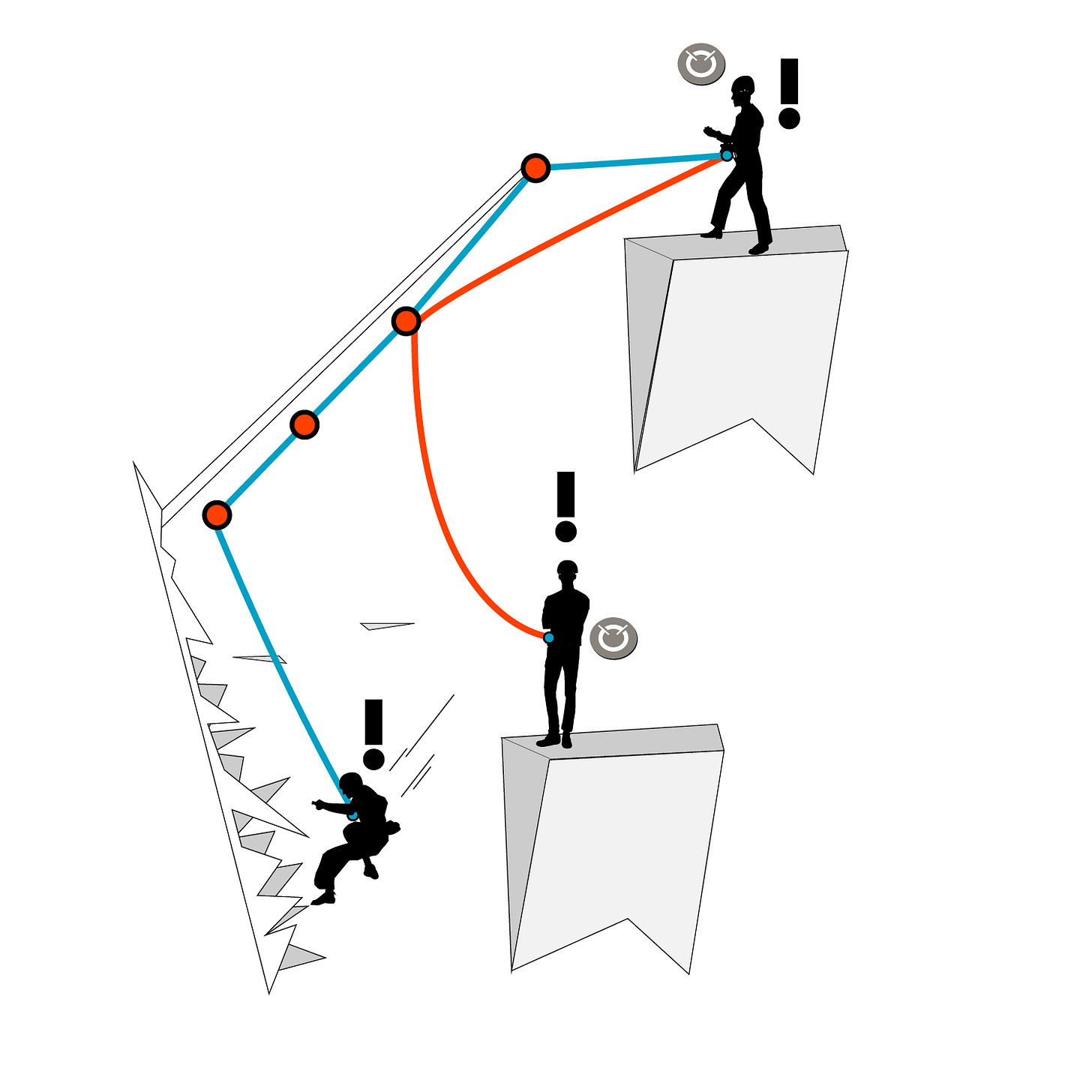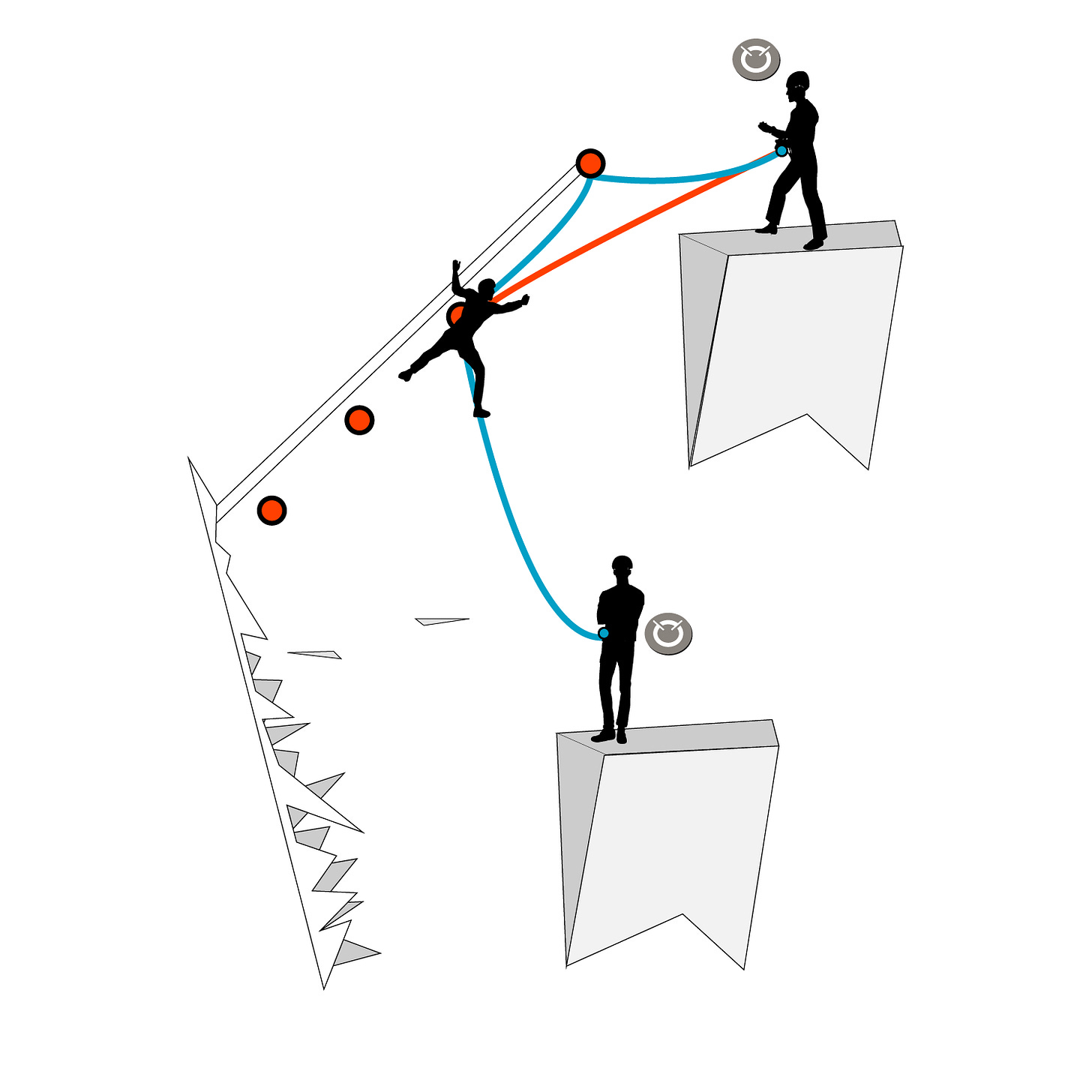Now get out of that #3
In this weeks Now Get Out of That, our two climbers, stuck high on a cliff, faced with an unprotected crux which puts the second in harm’s way, is joined by a third climber. This means although the team have two ropes to help solve a problem, we’re back to each second only having one rope on which to climb.

Forethought
Often, the best way to avoid a dangerous situation or circumstance is to recognise it before you find yourself in said situation, because the energy required to avoid a bad situation is only a fraction of what it takes to get out of one.
Sometimes being able to foresee such a situation is based on common sense, or having found oneself in such a pickle before (you can see the signs), so one can avoid them next time (ideally!).
Often in high-stress moments or when exhausted, when you just want to escape your current situation, both your own brain and the shared team brain, can often lack the necessary spare CPU to dedicate towards looking out for traps, pitfalls and dumb errors, leading to a form of helpless desperation (where you keep rolling the dice but don’t really care what the number are), which can very easily end in trouble. Keeping something back is vital to avoid this kind of cognitive error (recognising comes from experiencing it beforehand), as well as consciously slowing everything down in order to allow your CPU to catch up.
Other times you will catch dangerous possible outcomes simply by listening to your “Spider Senses” (so listen to them).
In this scenario, the leader should be able to spot a possible hazard before they begin to lead or notice it as they’re leading, and so either has a plan of action or form one on lead.
What you don’t want is for an “Oh Shit” moment when the second begins to struggle on the crux and everyone suddenly sees they’re about to smash into the corner.
Worst case
If no one in the team has spotted this problem, and the climber on the rope clipped to the first runners goes first, this could result in the climber falling off and swinging into the corner. Not good.
Secondary Belay
One option is for the third climber to belay the middle climber over the crux moves, using their spare rope, the rope being unclipped once they’re over the hard spot. This method would need to be carried out using a loop of rope ideally, although the third climber could untie and give the climber their end of rope, in order to give them the maximum amount of rope (a loop reduces the available rope by half). If the third climber was to untie, they would have to retain the rope (which would be through their belay device), at all times in order to regain the end!
Asymmetric method
The best way to deal with this issue is for the leader to have foreseen the problem, and clipped one rope in such a way as to create a top for one second. This would allow the said climber to climb the pitch and remove any protection that is going to create a dangerous fall for the third climber, perhaps even removing all protection from both ropes (or leaving in some key pieces).
The biggest danger here is that by having the middle climber’s gear midway along the crack, they are now potentially faced with a swing in the opposite direction.
The situation can be dealt with by the second climber clipping their rope into protection designed for the third climber, removing each piece behind them (back clean) once they’ve clipped the next piece, creating a “rolling runner” that will avoid a big swing.

Conclusion
Climbing is a game of problem-solving, be it how best to place one’s fingers on a tiny crimp, at what angle your sticky rubber will pop off a granite smear, or how to block out someone snoring in an alpine hut, it’s all the same. But each answer is generally formed from past experience of failure and success and having a go (but never not trying). Visualisation, or just thinking up problems and putting together solutions in your head, is a great way to grease your problem-solving skills and give yourself a little bit of a headstart on fate, chaos and disorder.





